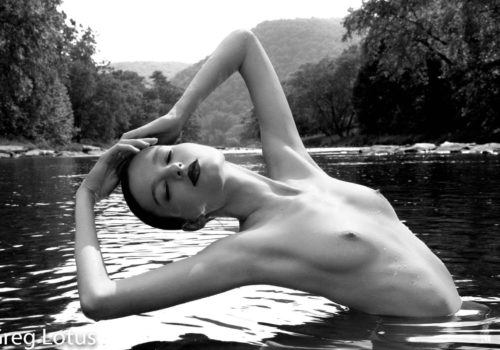The relationship between dance and fashion began in the Renaissance period, where social dancing echoed society’s values.
Historically, around the 1830s-1840s Romantic era, ballerinas were becoming the epitome of beauty. Ballerinas were idealized and regarded as celebrities. Today fashion models are more so subject to these standards.
Around the same time, ballroom dance culture emerged, beginning with the waltz. Social developments of the time were reflected through the movements, but more so in the elaborate costumes. The two-person dance or “danse à deux” in ballroom and “Pas de Deux” in ballet caused the entertainment of watching other people to gain further traction. Dance reflected the current social circumstances of a time and combined customary behaviors, class standings, and appearance relevant to society at a particular time with aspirational social ideals.
Dance plays an integral role in the world of fashion photography. Dance and fashion photography are both iterations of grandeur. They search to connect us to the beauty and elegance that surrounds us. Dance, just as fashion, stimulates both the critical eye and the artistic one.
Through fashion photographers’ eye and their unique sense of composition and staging, dance becomes the culmination of grace, elegance, and precision. Their distinct visual understanding of the human body essential in ballet and the theatrical, enhanced, and unexpected qualities of fashion photography have complemented each other to a point where the relationship between their qualities became inevitably intertwined and ever-present.
Three photographers that regularly exhibit iconic fashion dance images are Richard Phibbs, Greg Lotus, and Sylvie Castioni.
The in-high-demand Canadian photographer Richard Phibbs’, whose work can be found in the private collections of Bill Clinton, Ralph Lauren, and Francis Ford Coppola, among others, is in constant search of capturing grace. He is aesthetically focused on beauty at its purest.
“[. . .] reducing things to the simplest. Stripping things down to the most basic is what’s most beautiful.” (Phibbs).
A series of his shots at the New York City Ballet in 2013 is a perfect example of this, filled with focused and precise imagery that enhances the certain elements captured. In the work, Gonzalo, New York City Ballet, 2013, which can be seen here, Phibbs intensifies the elegance and strength of the male ballet dancer by manipulating light and creating a moment of choreographed relief, both simple yet surreal.
The American photographer Greg Lotus, who has shot for the best fashion magazines, utilizes elegance and nature in many of his images. He is also very sharp in his composition and creates shapes with the body, employing its movement as part of it. Congruent with dance, in which the body is strategically applied to convey a story, message, or emotion, he also strives to give purpose to the space around him.
In a more abstract example of dance’s influence on fashion and beauty photography, his work, River Beauty, which can be seen here, presents a version of a cambré back, which is a classical ballet position. The image is an absolute demonstration of ballet’s presence in fashion photography. Through its display of poise and elegance, stripped and posed in nature, Greg Lotus creates a dreamlike character.
The French Photographer Sylvie Castioni, well known for her intimate celebrity portraits and powerful fashion shoots, is a dancer herself. She embodies the principles of various dance forms in her work. Through her images, she strives to depict a more profound, more emotional, and more spiritual dimension of the female body. Her quest to capture the truth, intimacy, and freedom is of paramount importance. “A good photograph steals the soul. Sometimes, this moment only lasts a fraction of a second,” said Castioni. Vitality is an ever-present motif in her practice, playing with the opposition between contraction and release and revealing the female soul and form as sacred. In her work titled, La Danseuse De Chaillot I – Paris, which can be seen here, these notions are palpable. The image depicts a woman consumed by the energy of life, bursting from within and taking shape through her posture. The position captured is an explosion of expression within the delicate grace of the female body.
Marie Audier D’Alessandris
















